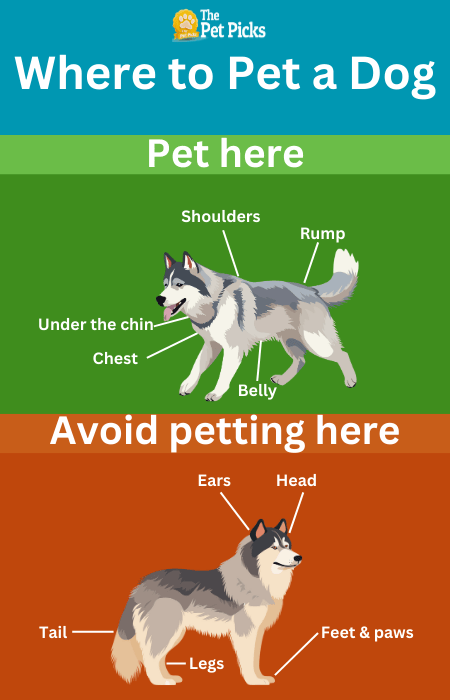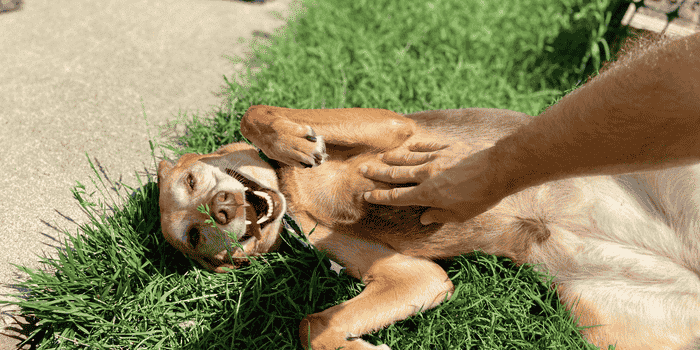The Secret Behind Belly Rubs: Why Your Dog Keeps Asking for More
Dogs and belly rubs go together like peanut butter and kibble. But have you ever wondered why your pup flips over and eagerly waits for a scratch? It turns out, there's actual science behind this behavior! From evolutionary instincts to nerve endings that send happy signals to the brain, let's explore why belly rubs feel so good to dogs—and why they keep coming back for more.
Belly Rubs: A Canine Comfort Zone
Belly rubs aren't just about physical touch; they tap into deep-rooted behaviors that have existed in dogs for centuries. When a dog exposes its belly, it's a sign of trust and vulnerability. In a pack, rolling over can be a submissive gesture, showing deference to a leader or a sign of playfulness among companions.
At the same time, scientific studies suggest that dogs have a neurological response to belly rubs that’s similar to what humans experience when receiving a relaxing massage. Their skin contains specialized nerve endings that respond positively to gentle stroking, triggering a flood of feel-good hormones like oxytocin and dopamine. This explains why your dog practically melts when you scratch that sweet spot!
Do All Dogs Love Belly Rubs? Not Necessarily!
While many dogs roll over for a good belly scratch, not every pup enjoys it. Some may expose their stomach as a sign of submission rather than an invitation for pets. Understanding your dog's body language is key—look for relaxed posture, wagging tails, and soft eyes as indicators that they’re enjoying the attention.
Some breeds and individual dogs may also have sensitivities to touch in certain areas. If your dog tenses up, pulls away, or seems uncomfortable when you go in for a belly rub, respect their boundaries. There are plenty of other ways to bond with them, from gentle head scratches to interactive playtime.
When Belly Rubs Become a Sign of Trust
A belly-up position is one of the most vulnerable postures a dog can take. When your pup willingly exposes their belly, it’s a clear sign they feel safe around you. This trust is built over time through consistent care, love, and positive interactions. The more secure a dog feels, the more likely they are to relax and enjoy a good belly rub.
Dogs also associate belly rubs with positive reinforcement. If belly rubs are paired with verbal praise, a loving tone, or even treats, your dog will naturally seek them out more often as part of their bonding experience with you.

Additional Tips: How to Give the Best Belly Rubs
- Let your dog initiate belly rubs—don’t force it if they’re not in the mood
- Use gentle, circular motions rather than rough scratching
- Watch for relaxed body language to ensure they’re enjoying it
- Pair belly rubs with verbal praise to reinforce positive association
- If your dog shifts or pulls away, respect their space and try again later
The Final Scratch: Why Belly Rubs Are More Than Just a Feel-Good Moment
Now that we understand the science behind belly rubs, it’s clear that they’re more than just a fun interaction. Belly rubs tap into deep-rooted trust, release feel-good hormones, and even help dogs relax by stimulating nerve receptors linked to stress relief.
So, the next time your dog rolls over with an expectant gaze, know that you’re not just scratching their belly—you’re strengthening your bond, easing their stress, and giving them a moment of pure bliss. And honestly, isn’t that what being a great pet parent is all about?
FAQs
Why do dogs expose their bellies for rubs?
Many dogs expose their bellies as a sign of trust and comfort. It can also be a request for affection, especially if they've learned that belly rubs feel amazing!
Do all dogs like belly rubs?
Not necessarily. Some dogs roll over as a submissive gesture rather than an invitation for pets. Always watch for relaxed body language before assuming they want a belly rub.
Why do some dogs kick their legs when getting a belly rub?
This is known as the scratch reflex, an involuntary response triggered by nerve stimulation in certain areas of the skin. It’s completely normal and harmless!
Can belly rubs help calm an anxious dog?
Yes! Belly rubs stimulate the vagus nerve, which helps lower stress levels and promotes relaxation. However, anxious dogs may not always enjoy them, so read their cues carefully.
What if my dog suddenly stops liking belly rubs?
A sudden change in behavior could indicate discomfort or underlying health issues. If your dog seems sensitive to touch in general, consult a veterinarian to rule out any medical concerns.

